Recently I signed up for a dark room class at Spruill Arts Center in Atlanta. I’m a professional photographer, but in this day in age this means I’m sitting at my desk, clicking away at a computer keyboard. Even my film is scanned in when I receive it. My back was hurting, my posture suffering, and I was damn tired of sitting in my office. I was desiring something that I could hold, something I could feel, something tangible.
In this class, I got to spend 3 hours a week in a dark room. The sharp smell of chemicals, the creaky circular door, the flicker of the red light. It became my meditation.
While there, I printed a variety of images – my dog on a walk around my neighborhood, the flowers blooming as the spring air graced my doorstep, my friends in the park during a recent festival with the sun shining behind them, and even photos from my great aunt during her college days back in the 50s.
But one thing I committed to was a session that was completely analog. I would shoot, develop, and print the session myself for a full dark room couple’s session. This is that story.
The Session
We spent about an hour in a park near their house. I had two rolls of film to make something out of – a sharp decline from the unlimited nature when hybrid shooting both digital and film. I had to be more thoughtful about light, knowing a RAW image couldn’t save me this time. I had to think through black and white, relying on light quality and contrast vs. the pop of the color of the flowers.
Karson & Wade were all in. They relaxed into the day, as I lead them through the park and the flowers, along the paths, and down the slide. I was thoughtful and deliberate. It felt good, knowing that every frame was intentionally chosen.
I drove away from the session, nothing to show, nothing to look back at. Just the confidence that I knew my gear, I knew the light, and I knew my skills enough to have produced something magical. Something that sat within the light captured in those two rolls of black and white film. Something that the dark room would uncover.
The Development
That week, I brought my film with me to my dark room class. Within the room, you walked through a turn style door that led to both the development room and the dark room. I chose the second opening, development. I walked into the pitch-black dark, completely reliant on my hands and the knowledge of a film canister. Shaking, I pried off the lid of the film, the roll spiraling outward. There were no backups, this was it. If that door opened, everything was gone.
I felt around in the dark, the spool.. I needed the spool. My fingers clasped it, and slowly… oh so slowly.. I wound each roll of film. Carefully, evenly, so that each frame had the same chance of hitting the developer at the same time. Once the development tank was sealed and my film safely inside, I flipped on the lights.
Blinking due to the quick shift from pitch black to fluorescent lighting, I poured out my chemicals. Developer, stop bath, fixer, the photo-flo. All measured out like I was some mad scientist in a back room. It was all here, lined up in a row. As I set the clock for my timer, I held my breath and poured the chemicals in. First the developer, the most important part. Messing this up messed up my exposure, so I needed it to be correct. I stood at the sink, agitating the tank, hoping something would appear on these little strips. The timer ends, I quickly dump the developer. Onto the stop bath – this will stop the developer from developing any further. More agitating, the sound of the stop bath sloshing against the film. I still haven’t seen it, I still don’t know.
Onto the fixer. Whatever I’ve done so far, this made it permanent. The images solidified, any mistakes, any wins. They were all there. A rinse, the photo-flo to reduce streaking, and another rinse. We did it.
I pull the film out of the tank, a sigh of relief – the images are there. All of them, all 72, correctly exposed. My hands start shaking more, not from nerves this time, but from excitement. The moment you see your images, even just on the negatives just after developing, is one of the most exciting moments in film photography. You’ve waited days, sometimes weeks, sometimes months for this. The memories come back, the feelings, the excitement. It’s all there.
I push my way back through the squeaky circular door, negatives in hand. Into the dryer they go, as I wait patiently for the next step.
The Contact Sheet
Once the dryer beeps, it’s time. I pull my negatives out and cut them into strips. Those strips you used to pick up from the Walgreens – you remember the ones, right? I slide each strip into a plastic protector sleeve, and I inspect them over a big table that’s lit up from below, easier to see the film that way.
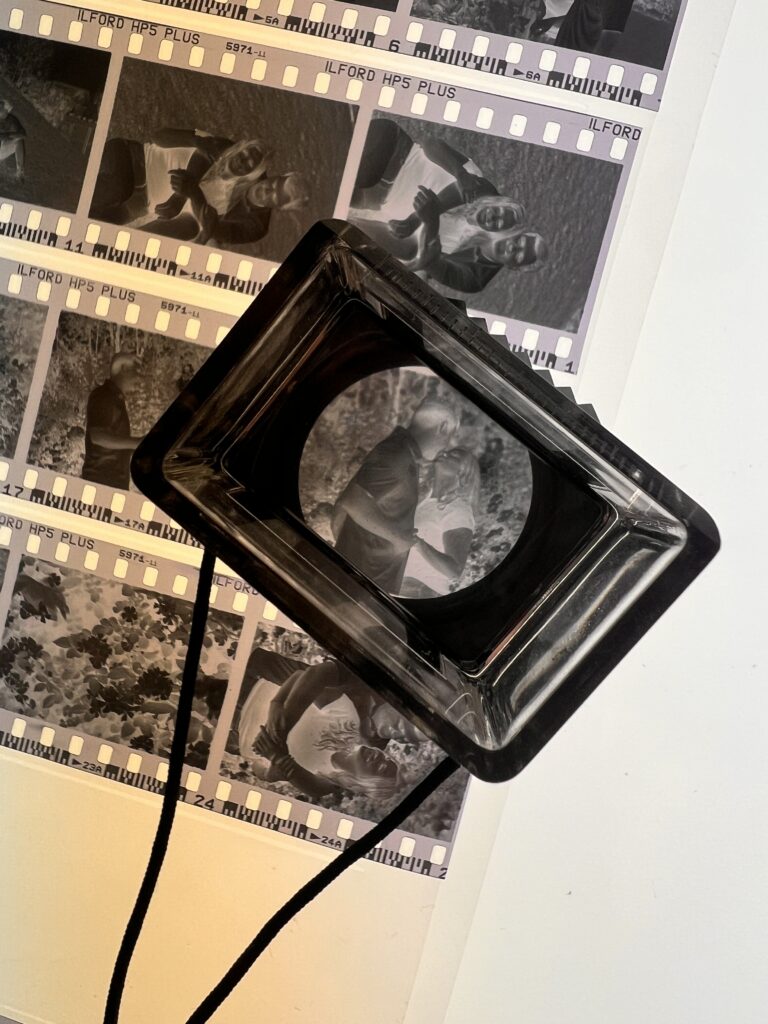
From here, I go back through that squeaky circular door, this time stepping out into the room on the right. The red light is shining, my friends are already in here working away at their stations. My eyes, once again readjusting to the darkness with chemical smell filling my nose. This is where we go from film to art, and I can’t wait.
I set up at my station, my sleeves of freshly developed film in hand. The first step: the contact sheet. This is a print of the entire sheet of film so you can inspect each image. This helps determine which you’ll print – because fuck, that paper is expensive. I lay my full sheet of negatives down, a fresh piece of dark room paper underneath, and the light flicks on. 5, 4, 3, 2, 1. The light turns off, a beep sounds. The light has passed through the negatives, turning the paper positive. A simple reaction to light, filtered through the capture of light during a scene.
The paper goes into a new round of chemicals – once again we have developer, stop bath, fixer, and rinse. The same order for a new type of development flipping a negative back to a positive. I wait and watch as these little specks of light slowly appear on the page. The flowers, the slide, the park – it’s back in 72 tiny frames. The contact sheet is fascinating, it’s a look into the thought process of the photographer. You can see decisions they made, in succession. It’s not curated, it’s raw. The full story unfolds in front of you.
The Printing
Back into the light I go. Eyes blinking, pupils adjusting. I pour over the contact sheet, identifying my favorites. Because printing is a process. This isn’t the same as a quick send to a printing lab. So I know selection of the photo I’m going to start with is a key piece.
I find it, a photo of them at the beginning of the session, snuggled up together. I see the way the composition hits, the light creating catch lights in Karson’s eyes. The kiss on the temple. I love it.
I sort through the sleeve of images until I find the one, carefully removing it from it’s protector. It goes into a tray connected directly to where the light will shine down. Blowing off the dust, knowing there is no Photoshop here – no generative AI, no curves, no sliders. I’m at the mercy of one little lightbulb and a whole bunch of chemicals.
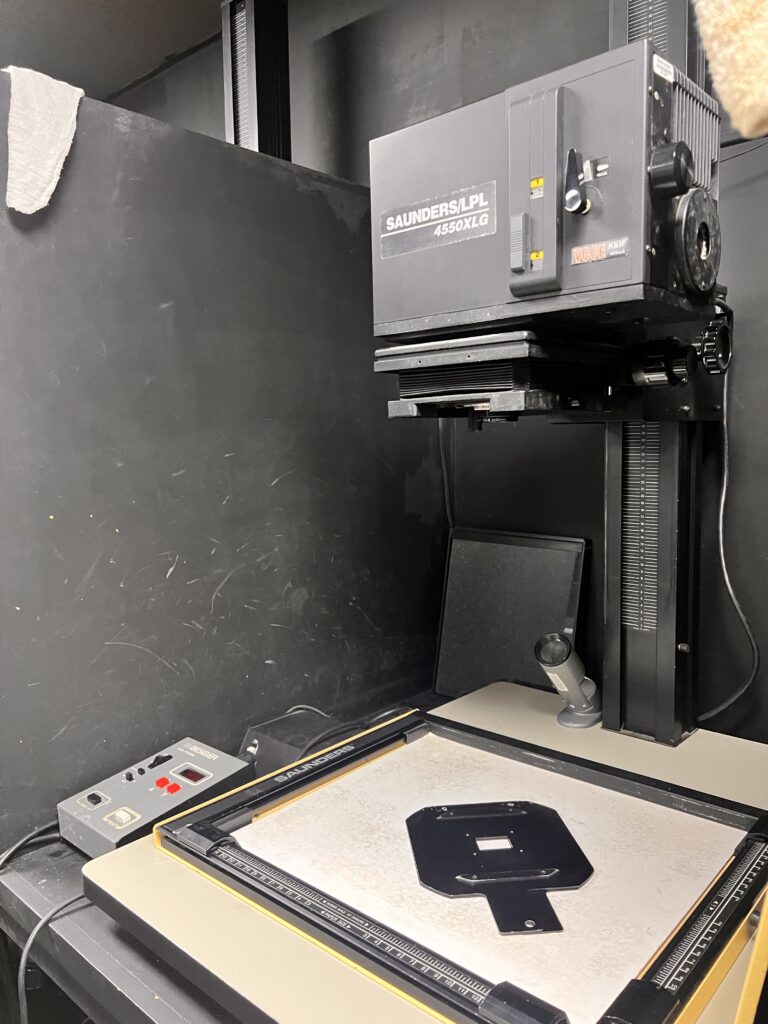
Back into the dark room I go, lit by that red light hanging from the ceiling. I hide my paper & turn on the bulb in station, the enlarger. Focus adjustments, cropping – it’s all manual. A twist of a knob, a shift of the enlarger, positioning the projected image just perfectly. The light turns off.
I slide my paper in, here we go. First, we do a test strip. There are so many adjustments you can make on the enlarger – time, aperture, contrast. This test strip helps determine where this particular image will sit. An image separated into columns, each with a different exposure. Into the chemicals it goes.
Nope, this isn’t it. His face is too dark, the shadow amplified. The cropping is off. A reference back to the test strip, finding the correct exposure for his face. I try again.
I’ve lifted the entire image this time, it looks better, but his face is still too dark. I find a little piece of cardboard, this’ll do. The clock starts counting down – 10, 9, 8, 7, 6. I cover his face with the cardboard – 5, 4, 3, 2, 1. Back into the chemicals it goes.
I pull it out. His face is visible. But the cropping needs adjustments. Again – 10, 9, 8. Another adjustment – 7, 6, 5. Again and again, waiting by the chemicals as I watch the timer tick down.
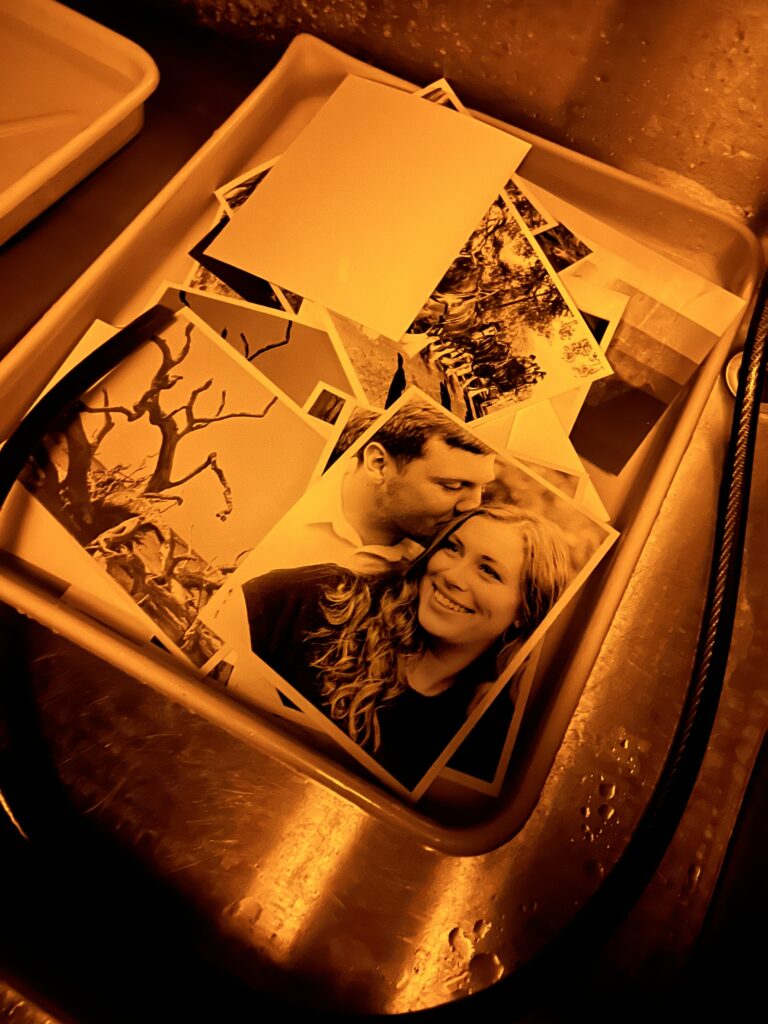
Finally, I have it. I’ve dodged, I’ve burned, I’ve cropped. This is it. My stomach does a flip – I did it. A photo, from the light hitting the film through the final round of washing. A one-of-a-kind analog print, created from a dark room couple’s session. It can’t be recreated, not in the exact way anyway. This finally felt like art.
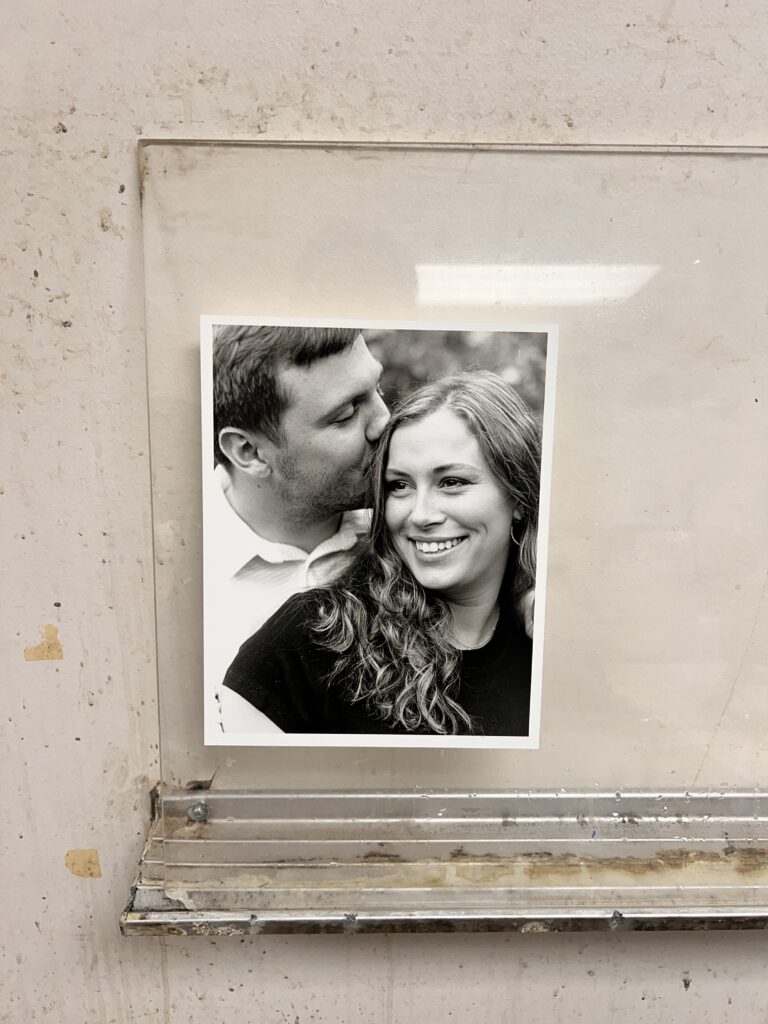
The Delivery
Having successfully completed my mission, I dropped the rest of the film off at a local lab to be scanned. The tangible film negatives, converted into digital files. The full gallery, to be shared with Karson & Wade. I carefully packaged their print and dropped it off at the post office, my final product from their dark room couple’s session. A package delivered, with a one-of-a-kind print for them to treasure. A walk in a park, as some would say.

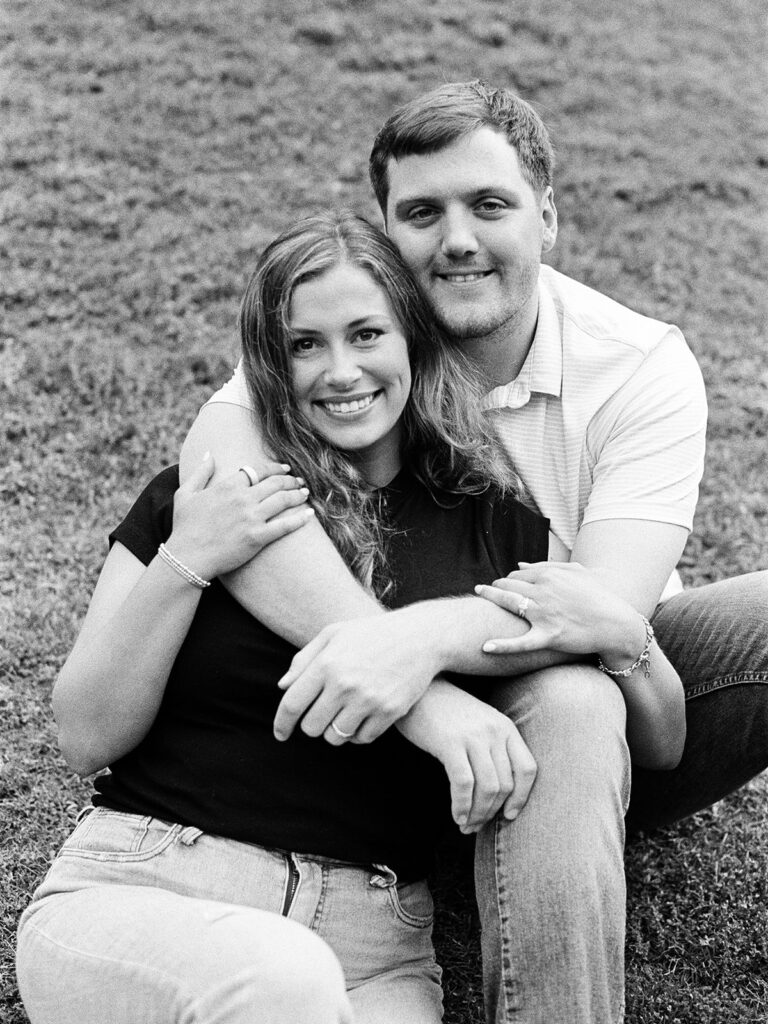

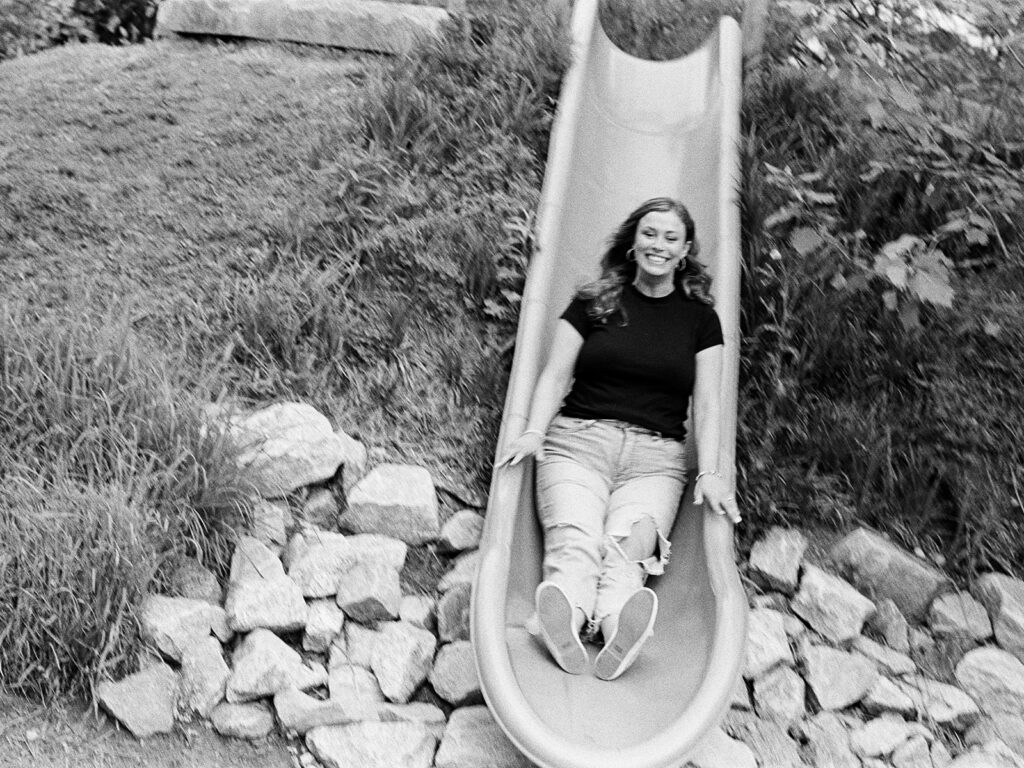
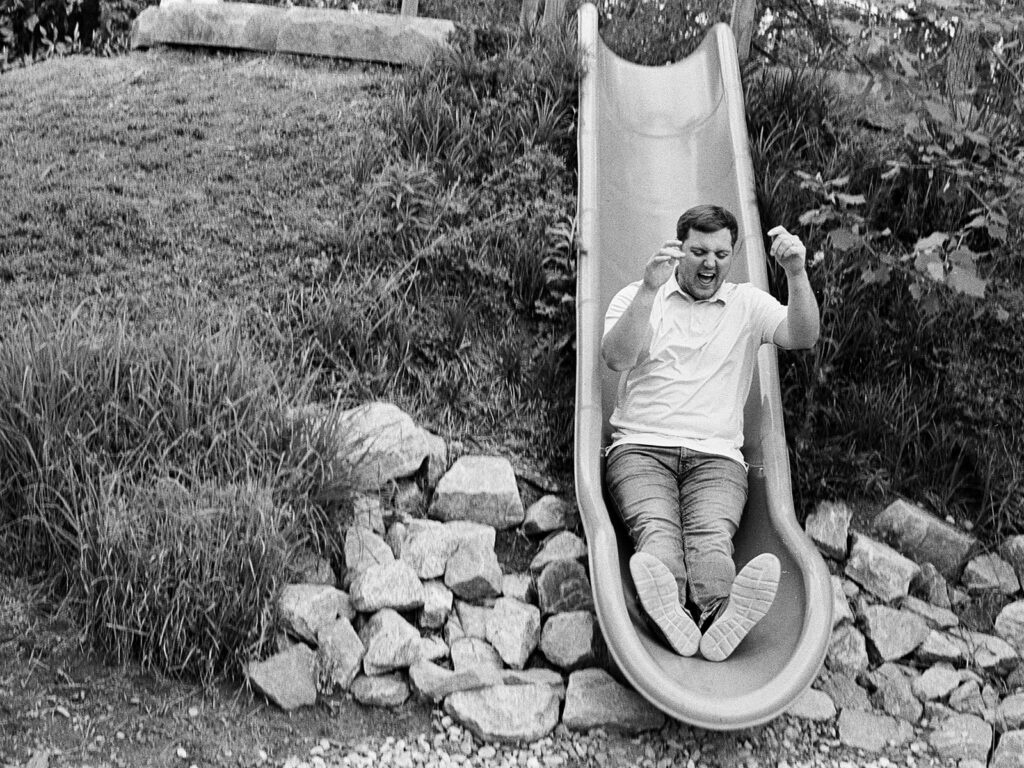
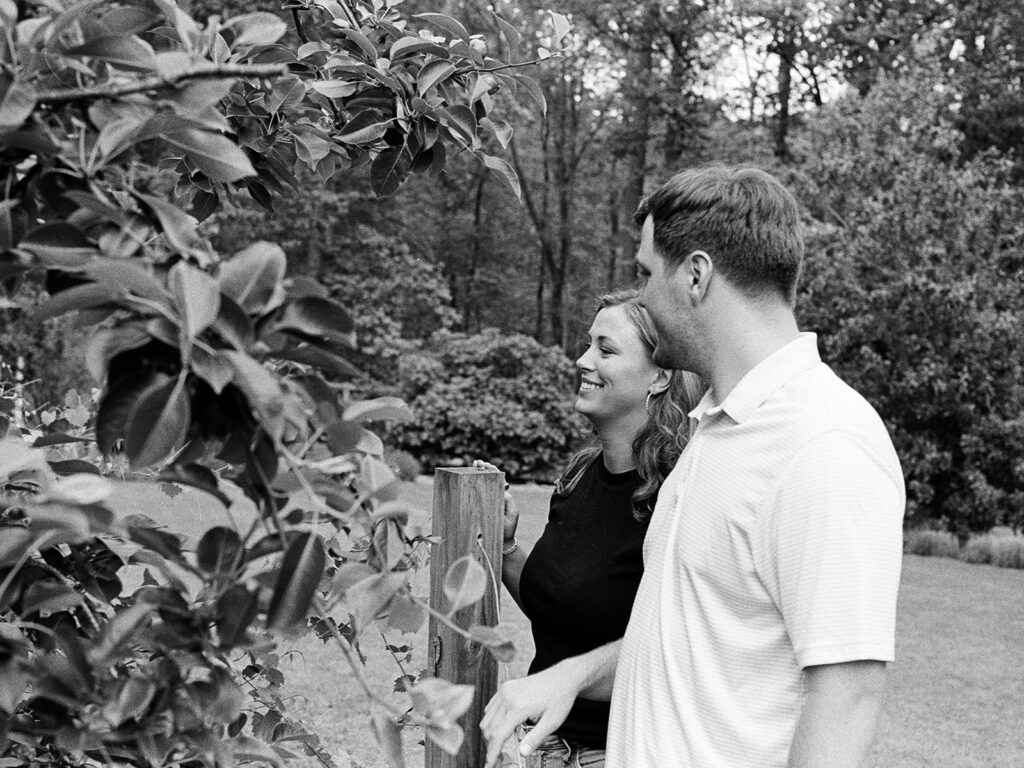
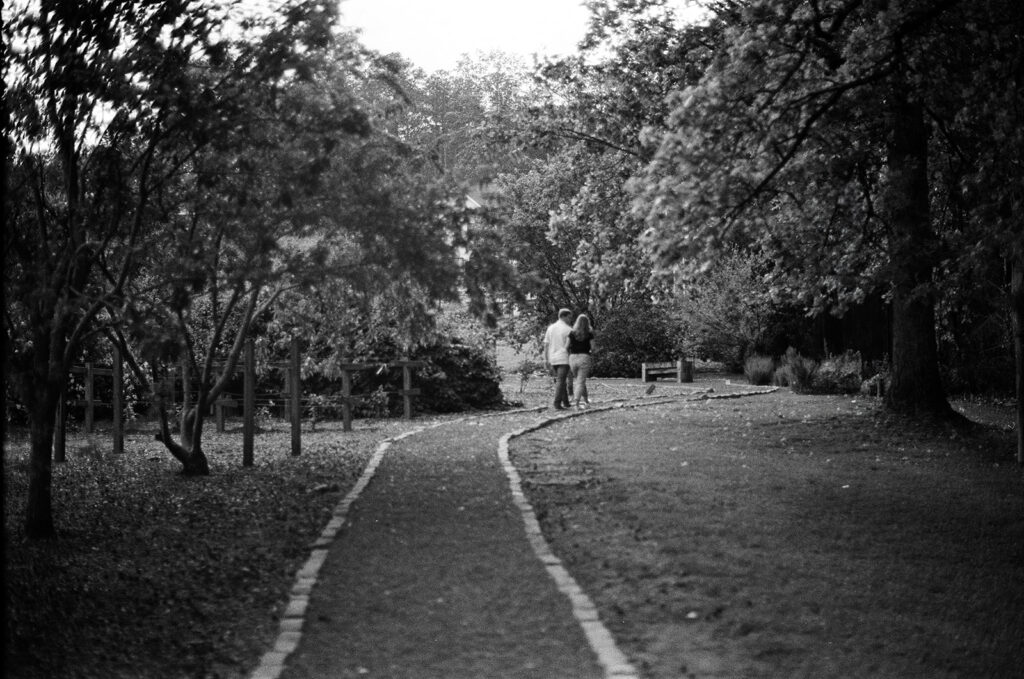
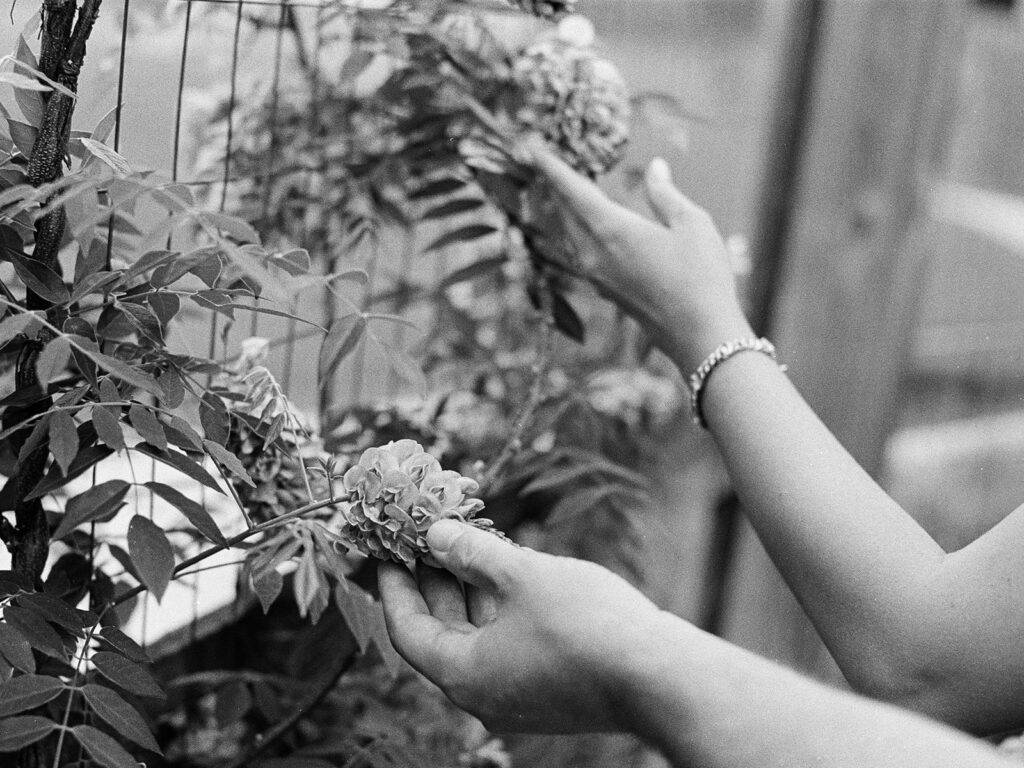
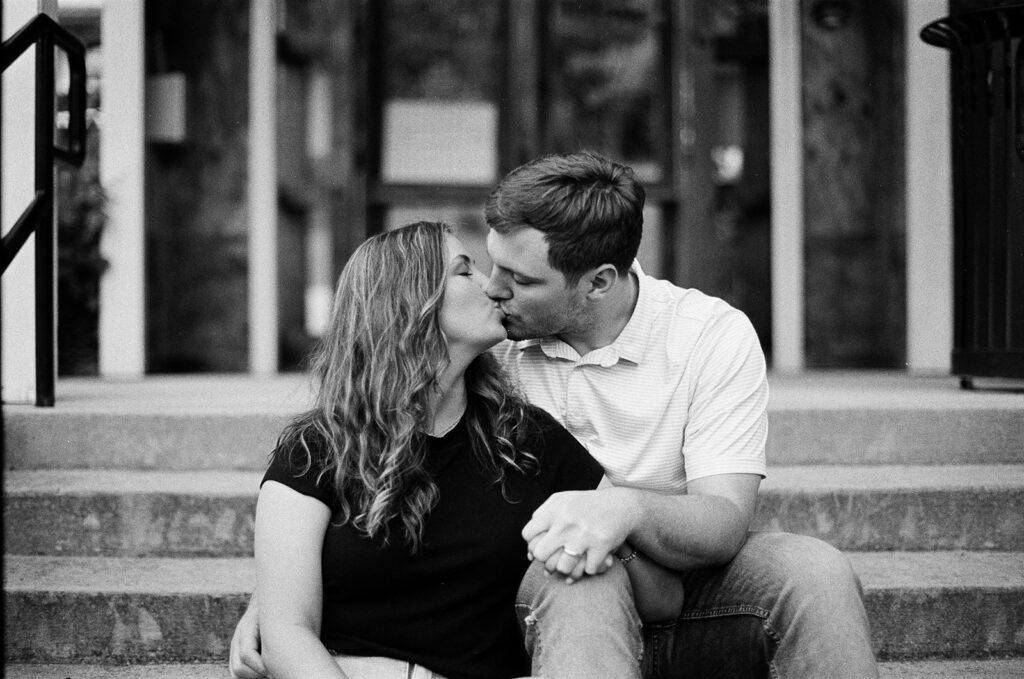
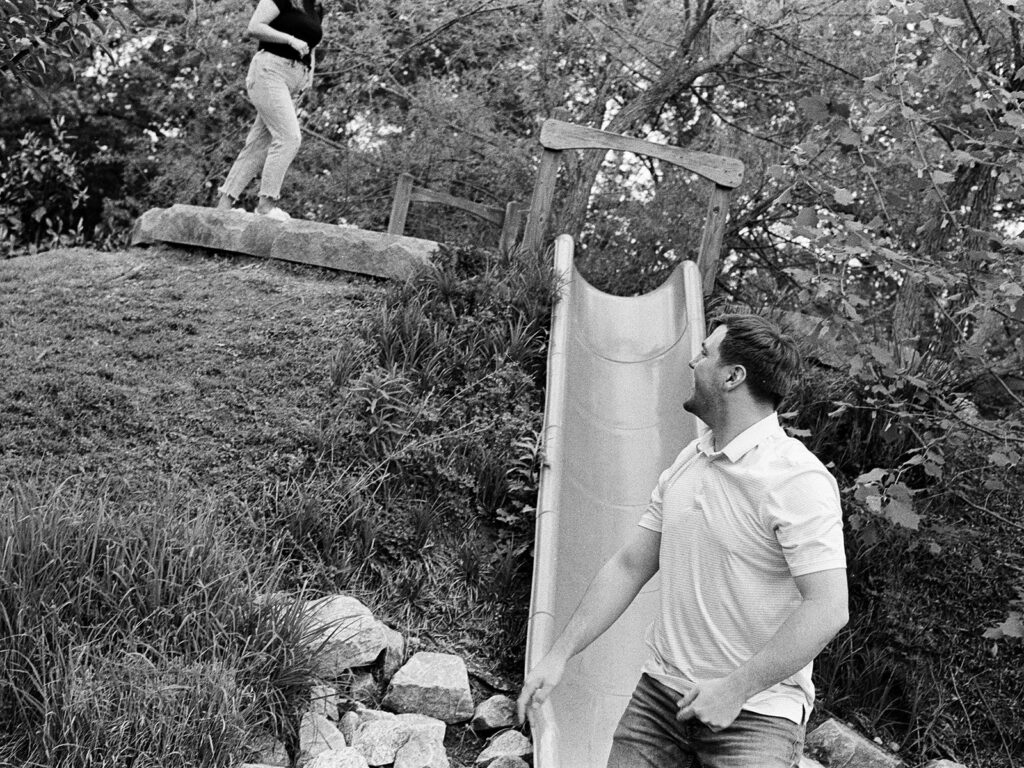
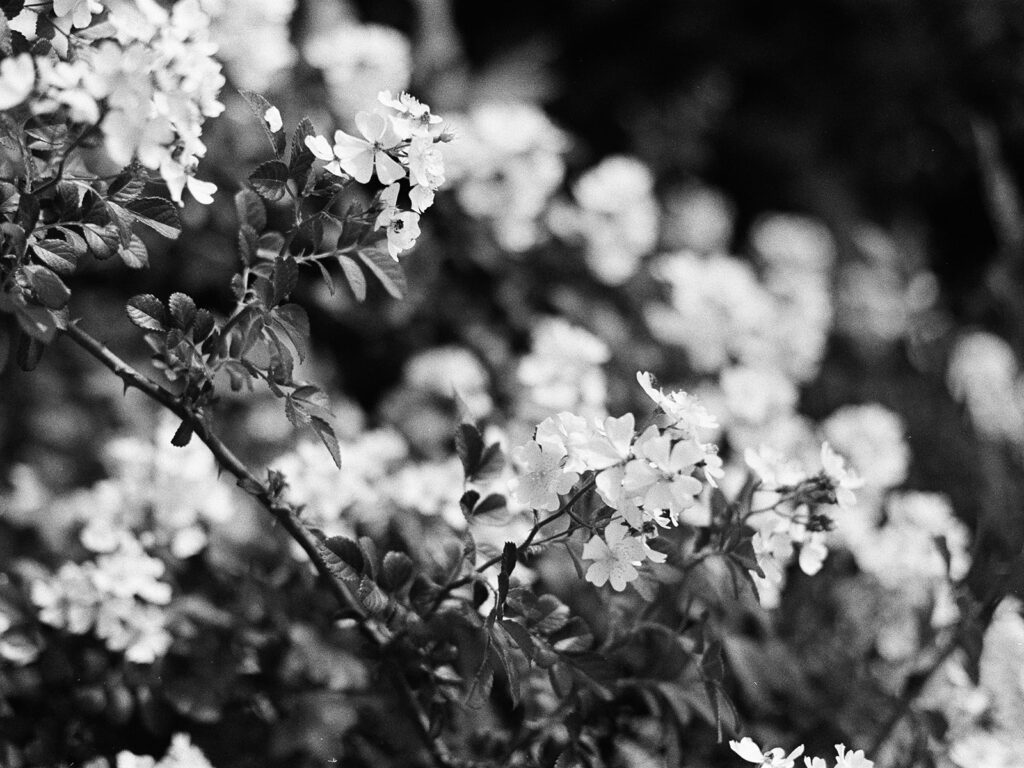
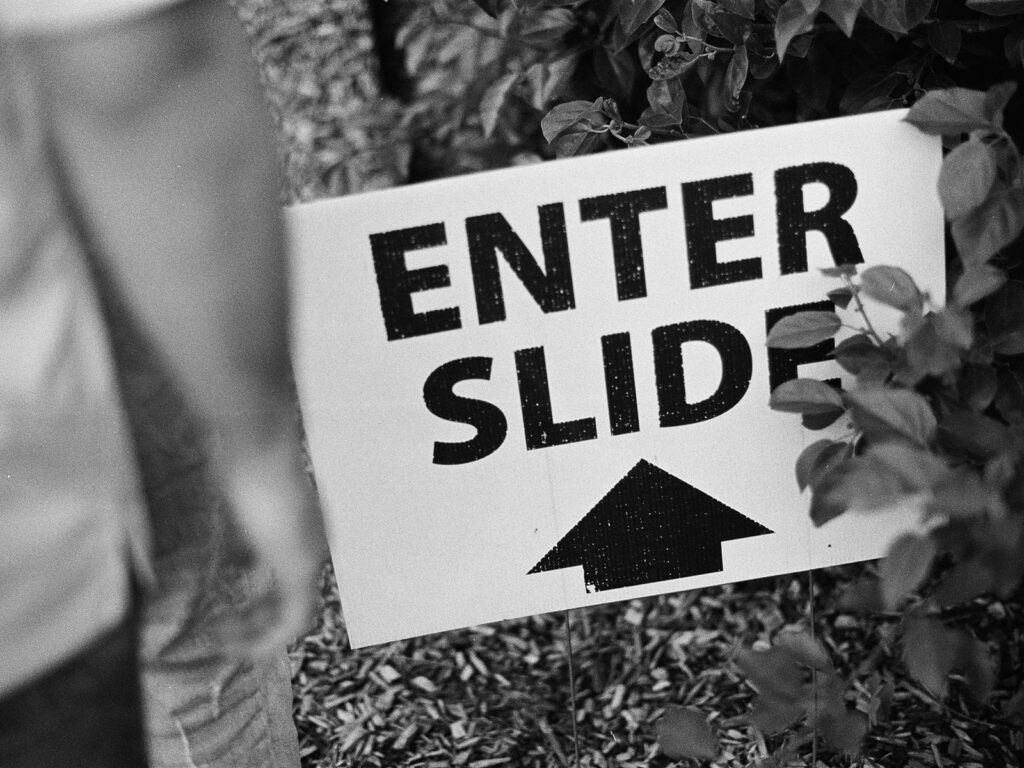
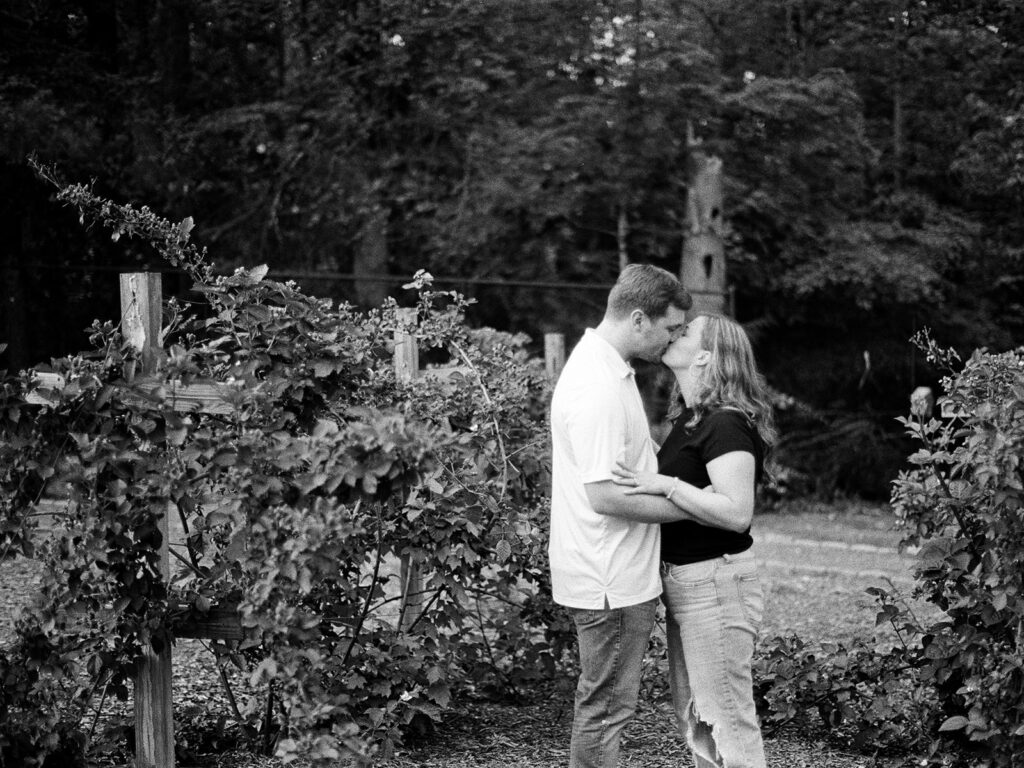
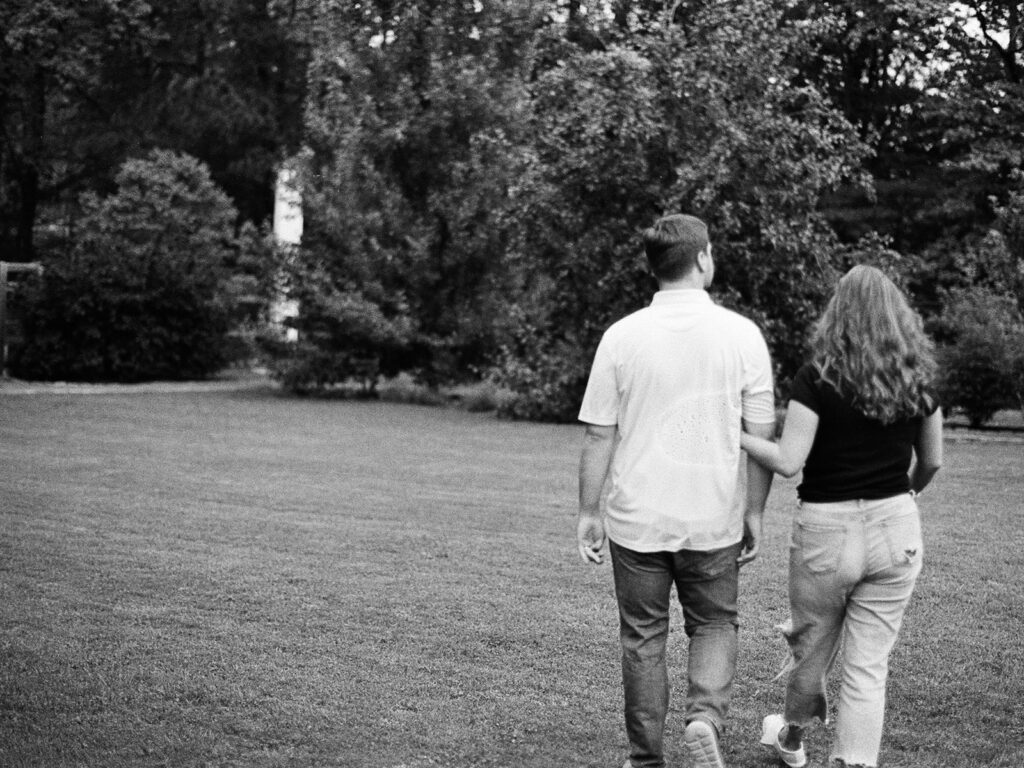
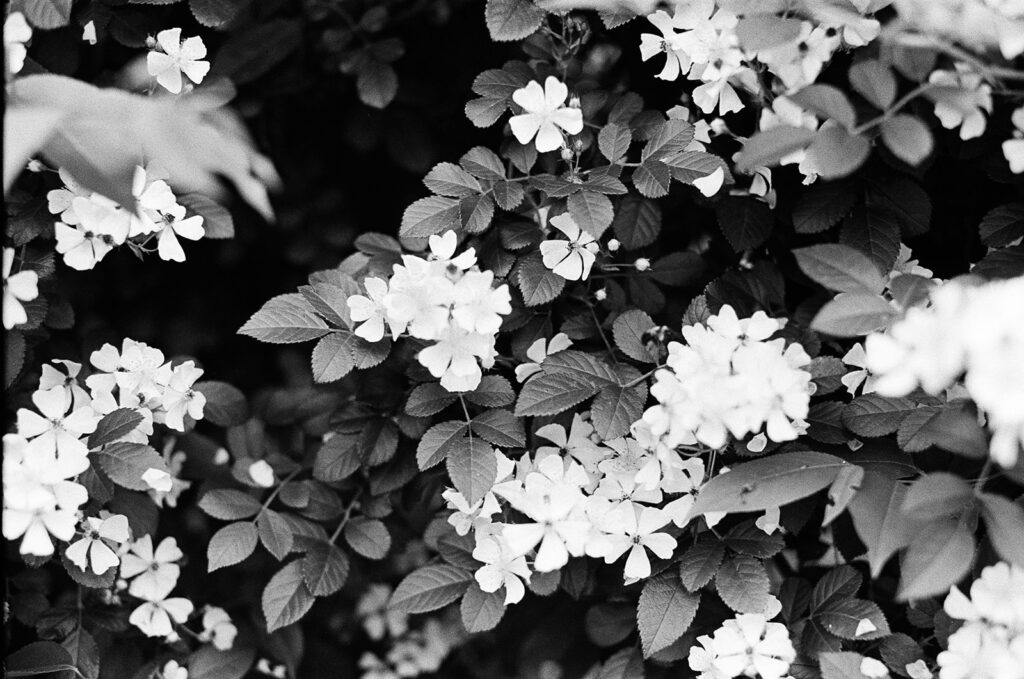
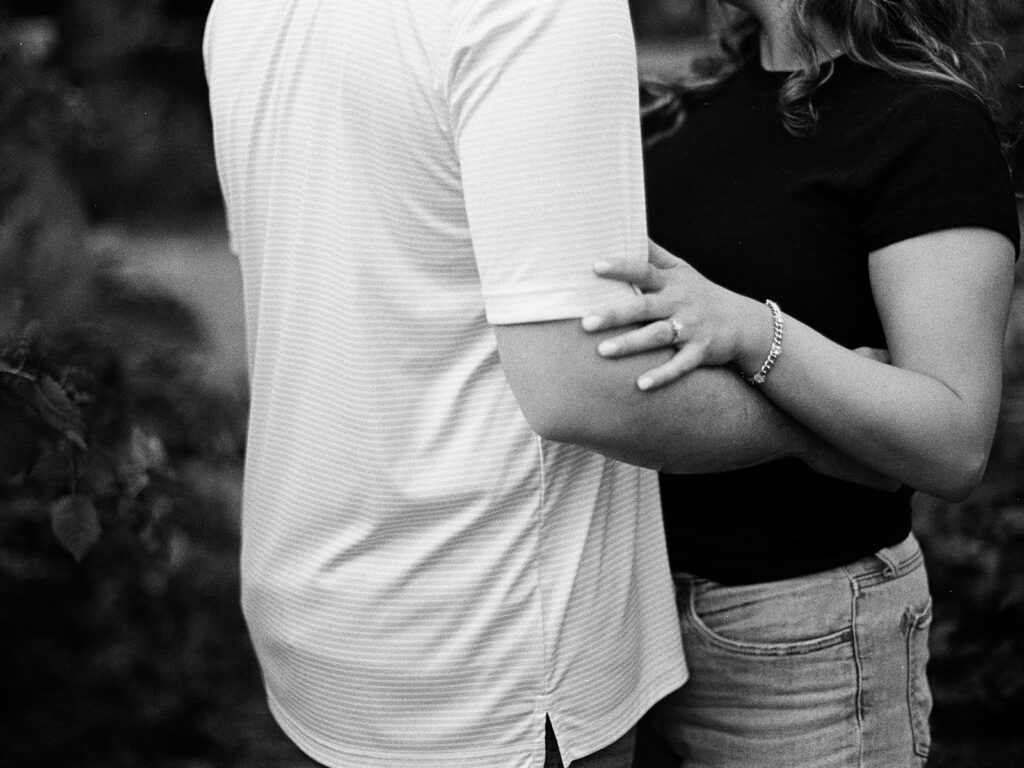
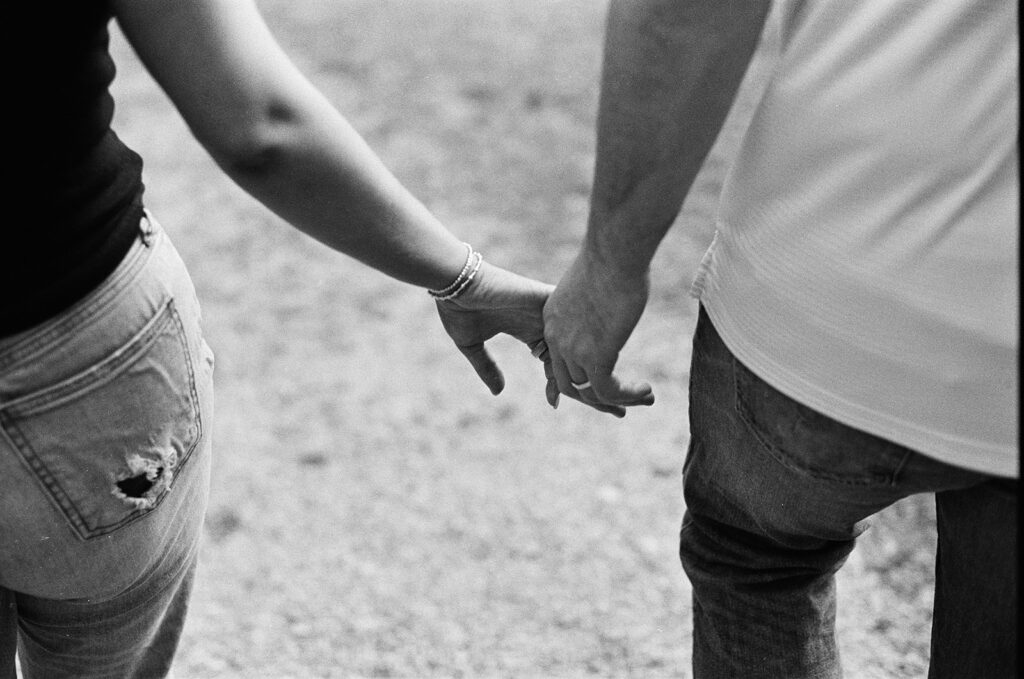
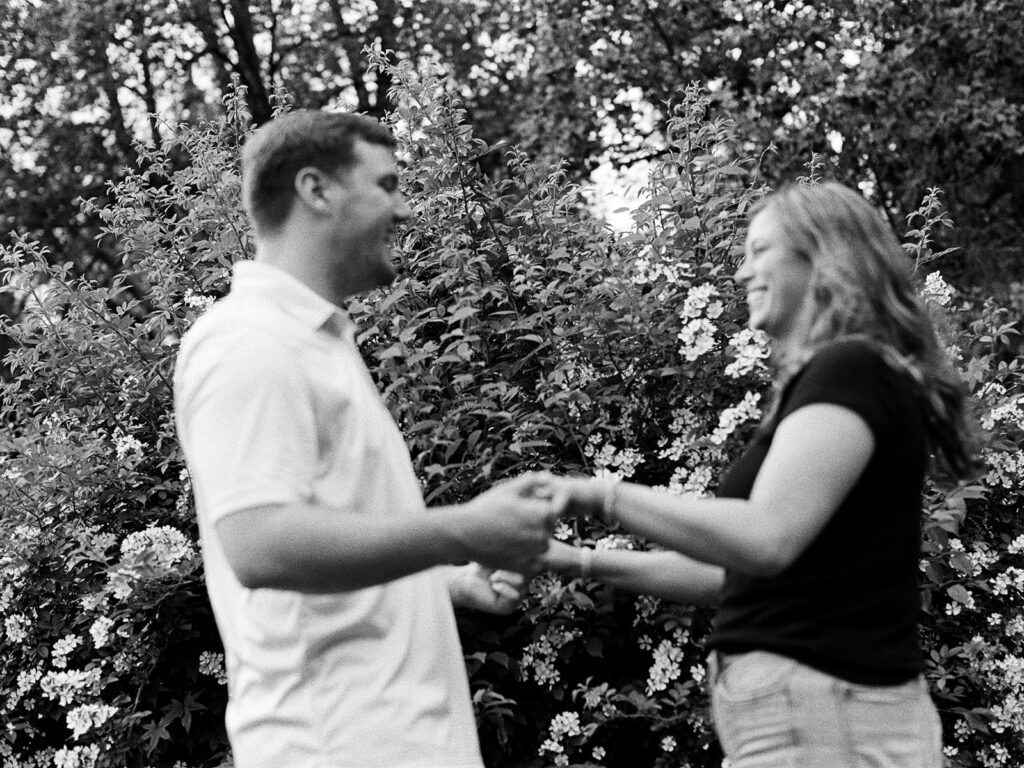
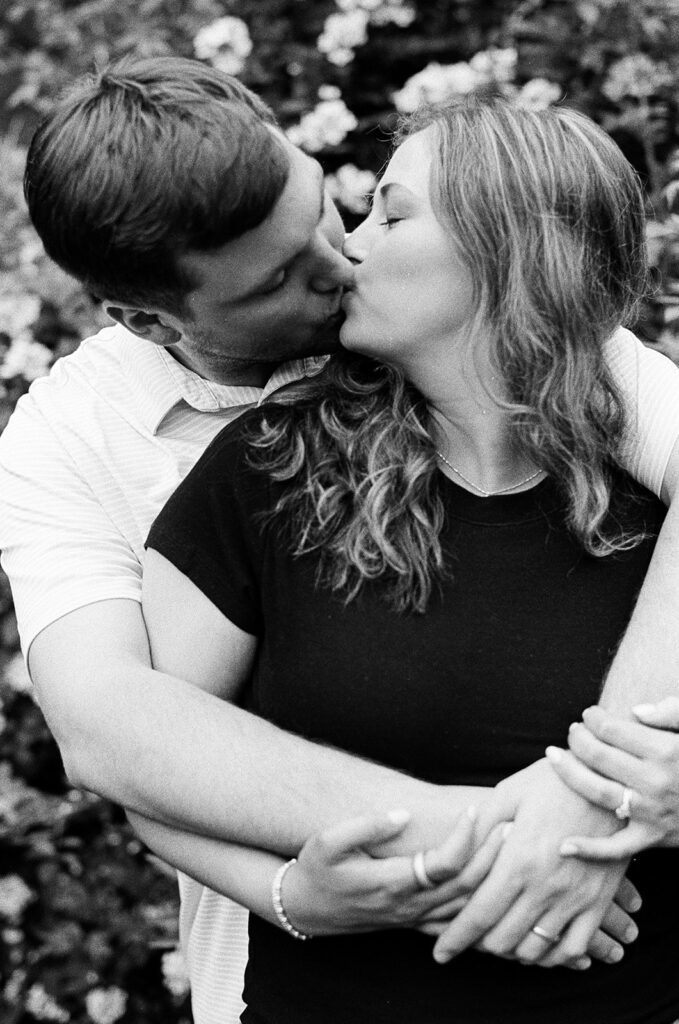
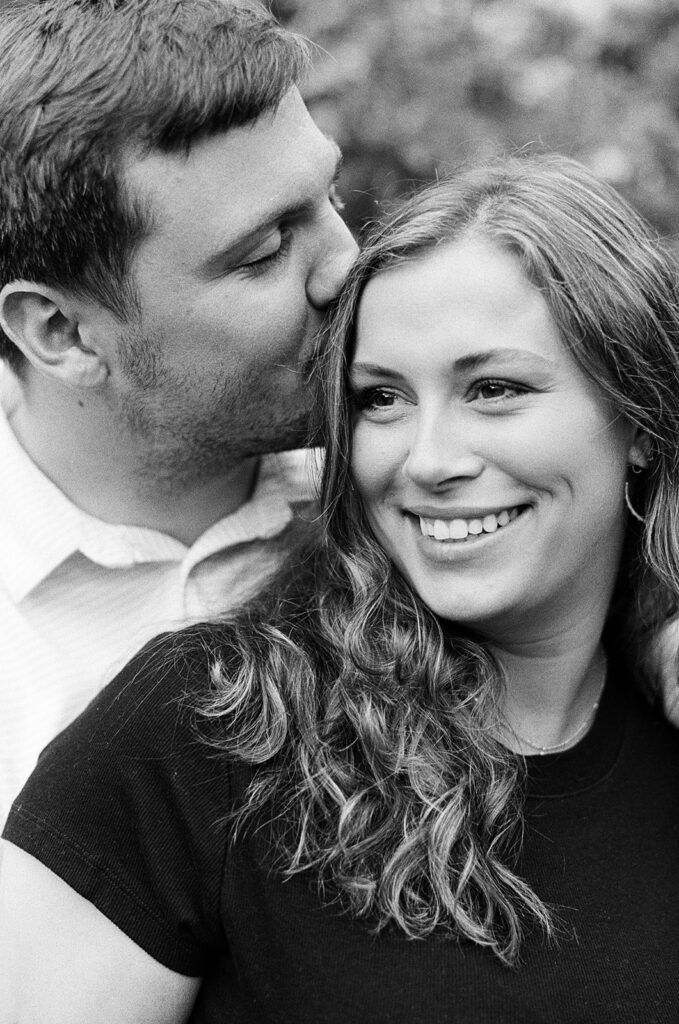
Interested in a dark room class? You can attend your own or plenty of other photography classes at Spruill Arts Center.
Interested in seeing more of my work? Head to my website for more work and information on your own dark room couple’s session.
Meet Kara
Photographer & artist inspired by good light, great composition, and you.
I’m Kara, the photographer behind these images. I’m a wedding and couples photographer with a goal of capturing your day as it unfolds - laughter, tears, quiet glances, big moments - in a way that feels completely you.
As part of the LGBTQ+ community, I’m deeply committed to making the wedding world a more inclusive, welcoming space. No matter what your love looks like or where your story unfolds, I’m here to witness it with care, intention, artistry, and to document it with the authenticity it deserves.